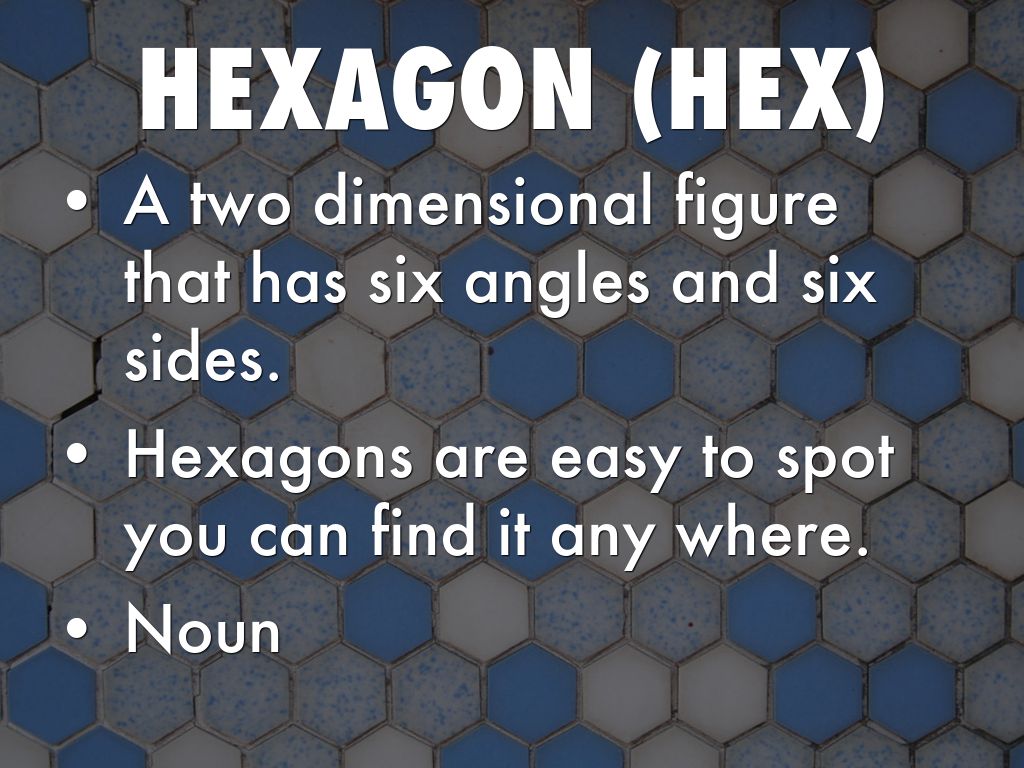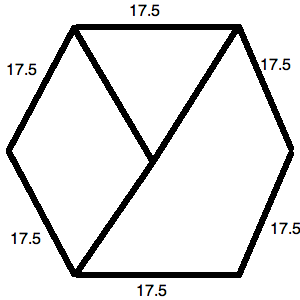
Solution (Please test this on your machines and see if is solves theĢ. Powerpoint draws in 'points' and I suspect a rounding issue is (ie a hexagon with the long side of 10cm will equal 8.65cm, not 8.66cm as it PowerPoint however draws a hexagons at a ratio of 1:0.865 The ratio of a hexagon is 1:0.866 (and Yes a circle should touch every This is an area of about $2.A true hexagon (equal sides and ofcourse angles) never has equal Height and There are six of these equilateral triangles in the hexagon $PQRSTU$ so The area triangle $QOP$ is the same as the area of a rectangle of width $|OK|$Īnd height $|QK|$ which we have just seen is We also haveĪngle $KOQ$ measures $60$ degrees since it is an angle in an equilateral


We have $|OQ| = r$ since it is a radius of theĬircle with center $O$ and radius $r$. Since angles $OKQ$ and $PKQ$ are congruent and add up to $180$ degreesĪre perpendicular. $|QK| = |QK|$ and $|OK| = |PK|$ since $K$ is the midpoint of segment $OP$. Is congruent to triangle $QKP$ by SSS: $OQ$ and $OP$ are radii of congruent circles, Need to find the area of one of these triangles. Hexagon $PQRSTU$ is made up of six congruent equilateral triangles so we Six sides is congruent to the radius of circle $C$. Now conclude that hexagon $PQRSTU$ is a regular hexagon as each of its Reasoning applies to show that triangle $TOU$ is equilateral. As in part (a), it follows that triangle $QOR$ is equilateral. Both $POQ$ and $ROS$ haveīeen shown to be $60$ degree angles and so $QOR$ is also a $60$ degreeĪngle. Now angles $POQ$, $QOR$, and $ROS$ togetherįorm a line and so add up to $180$ degrees. The reasoning of part (a) applies to show that the two triangles $ROS$ and If we construct a circle with center $S$ and radius $|OS|$, as in part (a), Hence we haveĪnd triangle $OPQ$ is equilateral. Radii of the circle with center $O$ and radius $|OP|$.

We also know that $|PO| = |QO|$ because both are We have $|PO| = |PQ|$ since both are radii of the circle with center $P$Īnd radius $|OP|$. If we draw a circle of radius $|OP|$ centered at $P$ it will meet theĬircle $C$ in two points, labelled $Q$ and $U$ in the picture below:

Segment $OP$ and successively build equilateral triangles from here. In order to construct our hexagon, we can start with $60$ degrees, the two base angles must also measure $60$ degrees making itĪn equilateral triangle. On the circle $C$ is an isosceles triangle since all radii of $C$ have the same length. A triangle with vertex $O$ and its other two vertices Since a regular hexagon divides the circle into six equal parts and there are $360$ degrees in the circle, each side of the regular hexagon should span a chord of


 0 kommentar(er)
0 kommentar(er)
